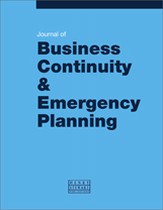Crisis leadership: Past research and future directions
Abstract
It is one thing to be a good leader, it is entirely another to be a good crisis leader. Crisis leaders face challenges distinctly different from normal operations. Crisis management requires leaders to employ knowledge and skills beyond those required for day-to-day work. As crisis is not a regular part of most work environments, facing crisis situations requires leaders to be well prepared for the unknown. This paper suggests that high-quality crisis leadership relies on the application of core leadership skills, targeted training for the unfamiliar and responsiveness when a crisis occurs.
The full article is available to subscribers to the journal.
Author's Biography
Stacy L. Muffett-Willett is an associate professor of emergency management at the University of Akron. Her background is in environmental health and safety, technical education and public administration. She is currently completing her doctoral work on educational leadership. Willett has published research in several areas including the response to Flight 93, and the Alrosa nightclub shooting. She is a certified hazardous materials technician for weapons of mass destruction, and was an environmental health and safety (EHS) as well as an International Organization for Standardization (ISO) manager prior to joining academia.
Sharon D. Kruse is a professor in the Department of Educational Foundations and Leadership at the University of Akron. A national expert on organisational change, Kruse primarily works with school district reform efforts. Her recent publications include ‘Decision Making for Educational Leaders: Under-Examined Dimensions and Issues’ (with Bob Johnson Jr., SUNY Press) and ‘Building Strong School Cultures: A Leader’s Guide to Change’ (with Karen Seashore Louis; Corwin Publishing).
Citation
Muffett-Willett, Stacy L. and Kruse, Sharon D. (2009, May 1). Crisis leadership: Past research and future directions. In the Journal of Business Continuity & Emergency Planning, Volume 3, Issue 3. https://doi.org/10.69554/BYZQ6622.Publications LLP
